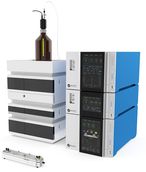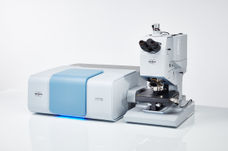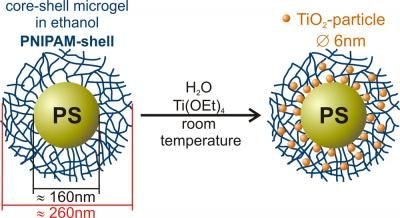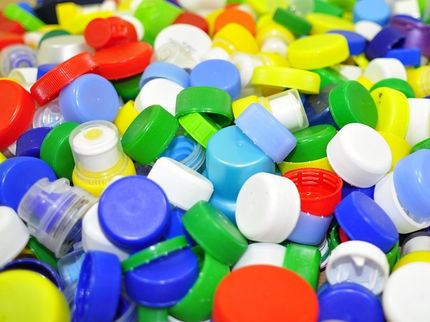Recyclable Plastic for the Printer
Polythioenones: a step toward a circular economy for synthetic polymers
The possibilities for material design and production of plastic components are being expanded through 3D printing technology. However, there is a shortage of recyclable polymers that meet the performance requirements. In the journal Angewandte Chemie, a research team has introduced a new class of polymers called polythioenones, which are mechanically and chemically recyclable and suitable for 3D printing. They also demonstrate better mechanical properties than conventional polyolefins—thanks to a special, ring-shaped building block.

© Wiley-VCH
Using digital modeling, complex structures can be precisely constructed layer by layer with 3D printers. Extensive customization and rapid prototyping open new possibilities in fields such as biomedical engineering, automotive manufacturing, and consumer product design. In 3D printing with the fused filament fabrication (FFF) process, a threadlike thermoplastic material is pressed through a hot nozzle, where it melts. It is then applied in layers until the desired three-dimensional component is produced—with a minimal waste of material. The downside to this method is the lack of suitable polymers that can be recycled. Chemically recyclable polymers, which can be split apart into their building blocks (monomers) and repolymerized, would help reduce environmental problems resulting from long-lasting plastic waste and help conserve fossil-derived feedstocks.
The synthesis of novel thermoplastic polymers with improved recyclability begins and ends with the design of suitable monomers. A team led by Will R. Gutekunst and H. Jerry Qi at the Georgia Institute of Technology (Atlanta, USA) has now developed a novel family of monomers: cyclic thioenones (CTE), rings made of seven carbon atoms and one sulfur atom. The rings contain one C=C double bond and one carbonyl group (C=O) and can readily be modified by the addition of different side groups. The monomers can be polymerized through a ring-opening reaction in which monomers are added one by one to the end of the growing chain. Known as a thia-Michael addition, this reaction is reversible, meaning that the resulting polythioenones (PCTE) can be depolymerized back to the starting monomer.
One of the synthesized polymers, PCTE-Ph proved to be particularly interesting. It is made from a CTE-monomer with an aromatic six-membered carbon ring (phenyl ring) as its side group. PCTE-Ph is a thermally stable thermoplastic with outstanding mechanical properties. Colorants and fillers can be incorporated, and it can be processed by customary methods. This new material is especially well suited for 3D printing. Components printed with this material can be mechanically recycled by simply melting the material and processing it again while maintaining its advantageous properties, such as tensile strength and thermal stability. In addition, it can be catalytically depolymerized back to the initial monomer in 90 % yield. This recovered monomer is then available for additional rounds of polymerization.
Original publication
Most read news
Original publication
Yong‐Liang Su, Liang Yue, McKinley K. Paul, Joseph Kern, Kaitlyn S. Otte, Rampi Ramprasad, H. Jerry Qi, Will R. Gutekunst; "Reprocessable and Recyclable Materials for 3D Printing via Reversible Thia‐Michael Reactions"; Angewandte Chemie International Edition, 2025-1-28
Topics
Organizations
Other news from the department science
These products might interest you

Eclipse by Wyatt Technology
FFF-MALS system for separation and characterization of macromolecules and nanoparticles
The latest and most innovative FFF system designed for highest usability, robustness and data quality

Spinsolve Benchtop NMR by Magritek
Spinsolve Benchtop NMR
Spinsolve is a revolutionary multinuclear NMR spectrometer that provides the best performance

HYPERION II by Bruker
FT-IR and IR laser imaging (QCL) microscope for research and development
Analyze macroscopic samples with microscopic resolution (5 µm) in seconds

Get the chemical industry in your inbox
By submitting this form you agree that LUMITOS AG will send you the newsletter(s) selected above by email. Your data will not be passed on to third parties. Your data will be stored and processed in accordance with our data protection regulations. LUMITOS may contact you by email for the purpose of advertising or market and opinion surveys. You can revoke your consent at any time without giving reasons to LUMITOS AG, Ernst-Augustin-Str. 2, 12489 Berlin, Germany or by e-mail at revoke@lumitos.com with effect for the future. In addition, each email contains a link to unsubscribe from the corresponding newsletter.
Most read news
More news from our other portals
Last viewed contents

Smart Lab Architects GmbH - München, Germany
SciQuest Successfully Completes Implementation of Enterprise Reagent Manager to Maximize Research Operations for Eisai Research - Research asset management solution designed to improve Eisai Research Institute's supply chain efficiency





























































